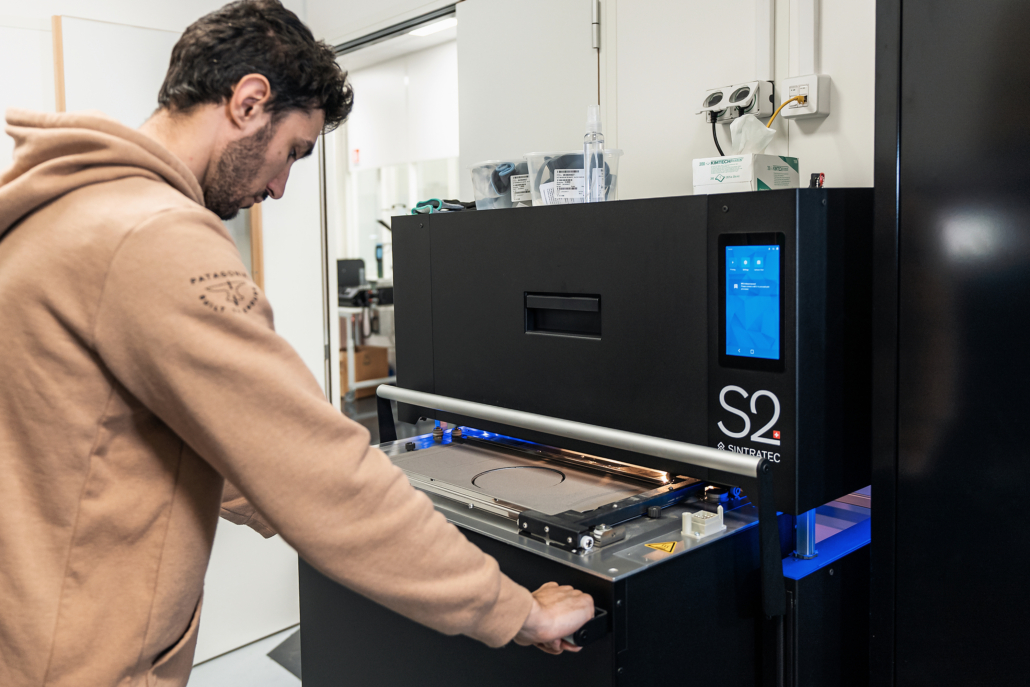At Schneider Electric SE, machine components, wear parts, and prototypes are manufactured with the help of 3D printing. To further advance product development, Brandon Alves and his team use a Sintratec S2.
A global player from France
Grenoble, at the foot of the French alps. The valley between snow-capped mountains is home to a site of the Schneider Electric Group. The Fortune 500 company with more than 160’000 employees worldwide is one of the largest players in the energy management and automation sector. At its Grenoble branch, new products for the electrical industry, such as circuit breakers for low to high voltage, are developed and produced – with the help of modern AM technologies.
3D printing as a driving force
One of Schneider Electric’s engineers is Brandon Alves. He works as the project leader for prototyping, and is also responsible for the 3D printing center. At the so-called ‘Openlab’, his team has access to twelve different 3D printers.
“With additive manufacturing we support our designers in their research and development, but we are also gradually moving towards production”, Brandon says.
To that end, the FDM and DLP machines at the Openlab have been complemented with Selective Laser Sintering (SLS).
Through collaboration with the French company KREOS, the Sintratec S2 became the latest addition to Schneider Electric’s 3D printing portfolio. Brandon Alves now employs the industrial SLS system on a regular basis to produce prototypes and final pieces, such as wear parts or components for specialized in-house machinery.
“We use SLS for these types of parts because our material for mass production is PA6, which is very close to the PA12 powder that we currently process”, Brandon points out.
According to the prototyping technician, its high precision makes SLS well suited for many applications in the electrical field.
In Autumn 2022, the Sintratec S2 became part of the French company’s Openlab.
Developing advanced housings
Brandon Alves showcases a recent project in which he used the SLS technology. The whole interior of a low-voltage circuit breaker – a component found at home – has been modified to make it more compact and to add new functionality.
“We 3D printed the housing cover on the Sintratec S2 to test the assembly and check the components for interference so that we could validate the product”, Brandon explains.
Similarly, a box for communication and monitoring was quickly tested, adjusted, and validated through a laser sintered PA12 prototype.
“I see the biggest advantage of SLS in the homogeneity of the parts”, Brandon says. “We don’t see any layering effects or fragilities along the axis which makes it a very interesting technology for us.”
Another benefit: SLS is also suitable for small series production, especially in combination with the Sintratec Nesting Solution – a software function for dense parts stacking. Given the growing demand for larger quantities of high-quality plastic components at Schneider Electric, the Swiss SLS system has proven to be the right choice.
“The Sintratec S2 meets our requirements, and we will use it more and more in our projects”, Brandon concludes.
All images provided by Sitratec.
Find out more about Sintratec at sintratec.com.
For more information about Schneider Electric, please visit se.com.
Subscribe to our Newsletter
3DPresso is a weekly newsletter that links to the most exciting global stories from the 3D printing and additive manufacturing industry.

























